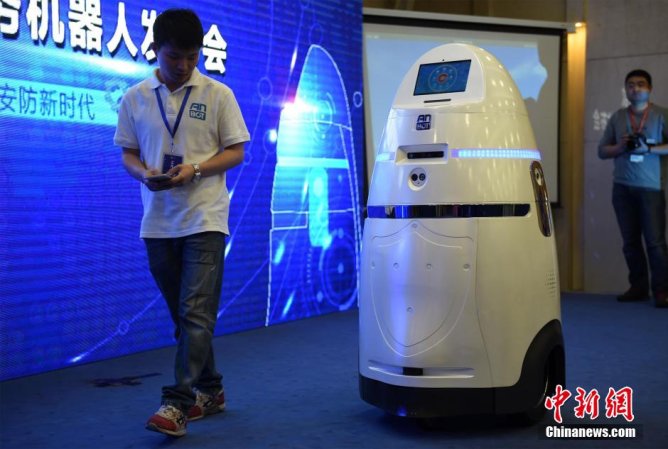

Anyone with access to a greenscreen can fake an invisibility cloak, so it’s natural to be skeptical when news circulates about a miracle device that can supposedly turn an object invisible.
Now, Harry Potter fans might actually have a reason to rejoice, although the latest “invisibility cloak” in the news isn’t magic, nor does it actually make someone invisible. It’s called Quantum Stealth, and it comes from Canadian military camouflage company, Hyperstealth Biotechnology Corp and its CEO, Guy Cramer. After nearly a decade of vaguely alluding to his advancements in invisibility but refusing to share anything other than computer-generated mock-photos, Cramer posted, back in August, an hour-long video demonstration to mark the official debut of his Quantum Stealth technology.
After a dramatic Star Wars-style text crawl announcing that “the Age of Invisibility has begun,” Cramer’s video opens on what appears to be a transparent sheet of plastic in front of an empty wall. But then there’s a subtle shift in the shadows and, a moment later, Cramer emerges from behind the screen. Walking back and forth, he’s almost completely invisible whenever he’s on the other side of that plastic.
In a phone interview, Cramer said the people are either impressed—or assume he’s faking it. He takes the skepticism as a compliment. “If it’s good enough that you think I’m faking it, then I’ve done my job,” he says.
To be clear, there isn’t really anything “quantum” about Cramer’s Quantum Stealth cloak. The term usually pertains to atomic structures, on the level of a single photon or quantum dot. The real power behind this new cloak isn’t quantum—it’s classical physics.
“It’s classical to the point of Galileo,” observes Duncan Steel, a physicist at the University of Michigan, in an email to Popular Science.
The key to this invisibility cloak? Lenses. Specifically, lenticular lenses.
If you went to middle school in the late 90s or early 2000s, you’re probably familiar with lenticular lenses. Remember those hologram stickers, posters, and trippy 3D trapper keepers? They were covered in ridges, and those ridges were an array of long, convex lenses, all running parallel to one another. The dimensional images in those stickers and posters are actually multiple images divided into thin slices, which are interlaced together. These magnifying lenticular lenses allow you to view those slices from different angles. From the left and the right, you can see the complete picture of each image, but as you turn the sticker the two (or more) images blur together, creating illusions—that’s how those stickers can make it look like a child is morphing into a monster, or a horse is running through a river.
What Cramer realized is that a clear sheet of these lenticular lenses can bend the full spectrum of visible light (it can also bend near infrared, near ultraviolet, and thermal spectrums). According to Cramer, physicists were skeptical that something like this was possible. “Physicists were saying, ‘well we know we can bend light at one specific frequency. But you definitely can’t do two frequencies at the same time, if one is red and one is blue. And definitely not the entire visible spectrum,’” he says.
This gif (which recently made the rounds on Twitter) shows a stacked grid of colored pencils through a lenticular lens. When the lens is oriented vertically, all of the vertical pencils become blurred to the point of invisibility. Turn it horizontally and the other pencils disappear, while the vertical pencils jump back into sharp focus. It looks like a magic trick, but it’s just science. The plastic lenses refract the light as it passes through. Instead of continuing in a straight line, the light is slowed and redispersed at different angles, creating spots where the light no longer passes through (Cramer calls these “dead spots”). If a person or vertical object stands in a dead spot of a vertical lens, then the light doesn’t hit them—they become essentially invisible.
Notice that Cramer very strategically demonstrates his Quantum Stealth cloaking in front of strong horizontal lines, like molding panels on the wall or a black windowsill. That’s because those horizontal lines do not get as obscured or warped by the refraction from the vertical lenses.
Really, the panels and windowsills that appear behind the screen are images from the left and right parts of the shield being pressed together in the center, explains Joseph Choi, an optical engineer at Raytheon. Cramer demonstrates this in his video by shining a laser through the lenticular material. The light goes in and is dispersed by the lens, then splits when it hits the object behind the screen. From the front of the screen, the lenticular lenses distort and magnify this split in the light, stretching the images to either side of the object and pinching them together.
The first version of the Quantum Stealth cloak was extremely simple: just one huge sheet of lenses running vertically. Although Cramer largely disappears behind the screen, the cloaking was blurry and a little distorted.
Version 2 improves upon the first—Cramer added a second piece of lenticular material to the back of the first. This creates a much clearer image, especially when the person or object is about 12 feet away. Since that version, Cramer has cycled through at least a dozen other iterations of his Quantum Cloak. For a more recent version, Version 13, Cramer puts together two sheets back-to-back that are offset slightly from each other, creating an interference pattern in the light that obscures a target almost completely. So if a person or a soldier were to stand behind a Quantum Stealth screen or hold it in front of them as a riot shield, from a certain distance away the soldier would seemingly disappear.
What’s actually happening in Version 1, and being built upon in later versions, is that the background images on each side of the screen, to the left and right of the person behind it, are pinching and blurring together in the middle, obscuring the human.
There have also been plenty of legitimate, non-hoax attempts at invisibility cloaks and related tech. The military tech space is understandably intrigued by camouflage that actively adapts to the background. And in 2006, a team of scientists including Sir John Pendry developed a sort of proto-invisibility cloak that was able to manipulate the electromagnetic spectrum using artificial materials, designed to exhibit light-bending properties not found in nature. This inspired other research programs to try to create their own “metamaterials” in an effort to bend other wavelengths of light.
And we’ve been burned in the past, too. In 2010, the British tabloids reported an inflated claim that their government had made a tank invisible (it was just a new type of “light diffusing camo”). A blurry soldier running toward a tank during the Iraq war was captured in a video so low quality it was mistaken for cloaking technology. In 2017, China’s “quantum of invisibility” cloak went viral only to be outed as a greenscreen hoax.
As a graduate student, Choi, of Raytheon, worked on the team that developed the “Rochester Cloak,” a device that bends light around an object using four small lenses and a light source—it successfully shifted all wavelengths of visible light, but it only worked on a very small area and wasn’t scalable for practical use.
Choi argues that the Quantum Cloak is not really a “cloak” in a purely scientific sense. “When we define cloaking, typically in the scientific community, it means that you send light through that medium and it comes out exactly as it would be if that thing wasn’t there,” he argues. “That’s actually very hard to do.”
An “ideal cloak,” he says, would generate an image that can be viewed from all angles, with no shifts or distortions or changes compared to the actual object.
In Choi’s opinion, Quantum Stealth is more like a clever, real-time photoshop filter—one that goes all-out on the blur and liquify tools. “Basically, this is blurring you. You’re not completely disappearing—you’re being blurred,” he says.
“There will not be a perfect cloak in the sense that it works for all times, all places, all wavelengths,” adds Choi. “But if you can make it hide from a lot of wavelengths, then it becomes practical.”
Cramer’s primary objective for his tech lies in its military applications. Out in the field, he believes that his invention could effectively mask a target, and, to an extent, its movement. And, Cramer says, if the cloak can’t hide something, it can at the very least distort the image so that it’s no longer a clearly identifiable target. The key to its potential success lies in the simplicity of the design. A Quantum Stealth cloak doesn’t require any power source, it’s lightweight and thin, and easy to use. “You just hand it a soldier and go ‘hold it in this direction’ and that’s all they need to know,” says Cramer.















